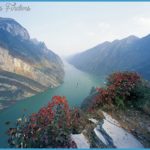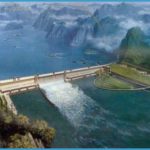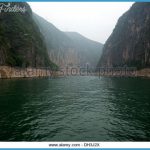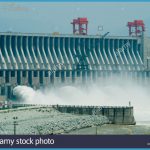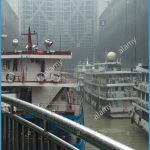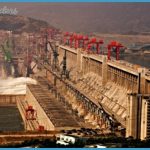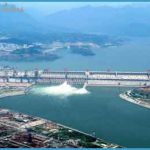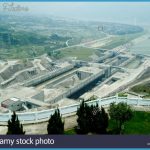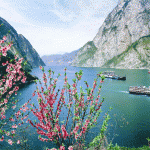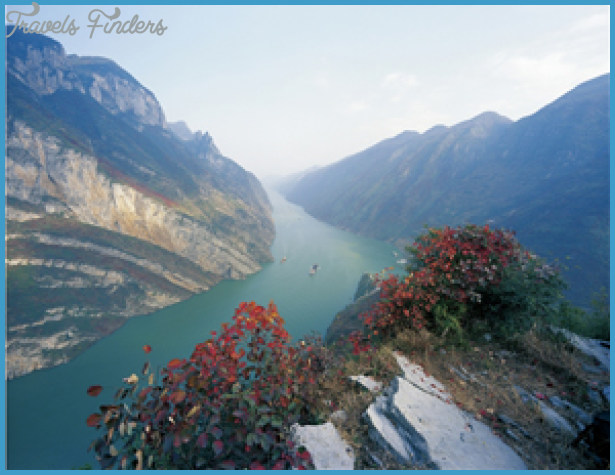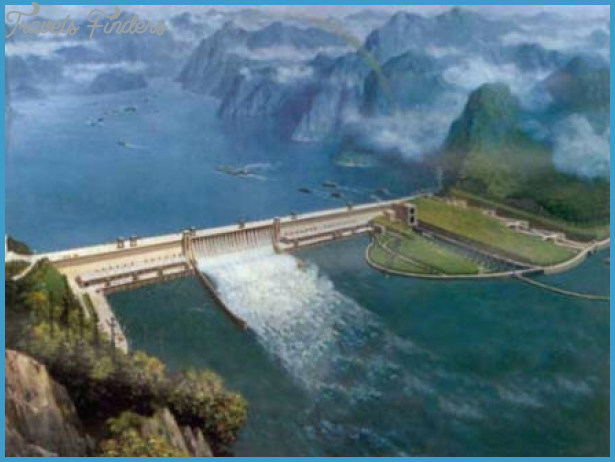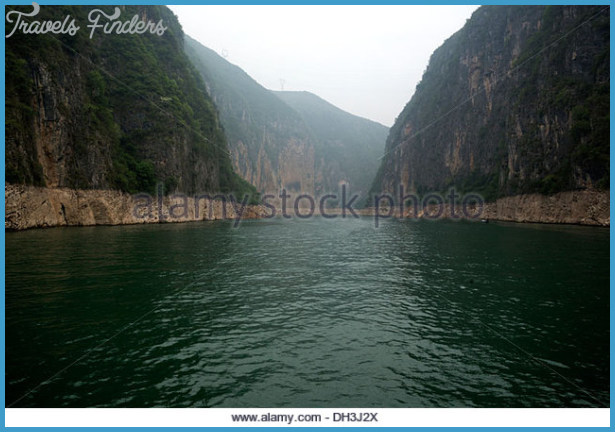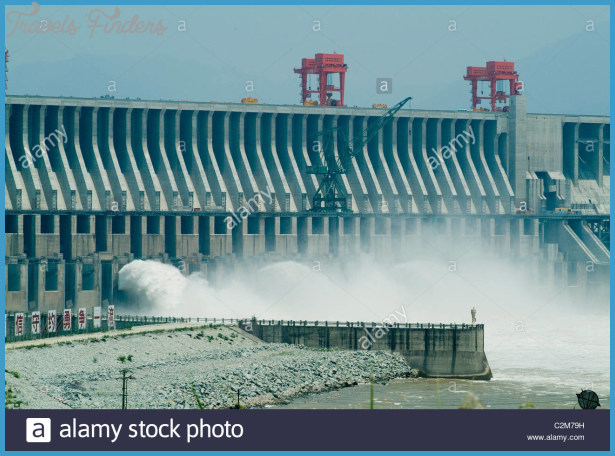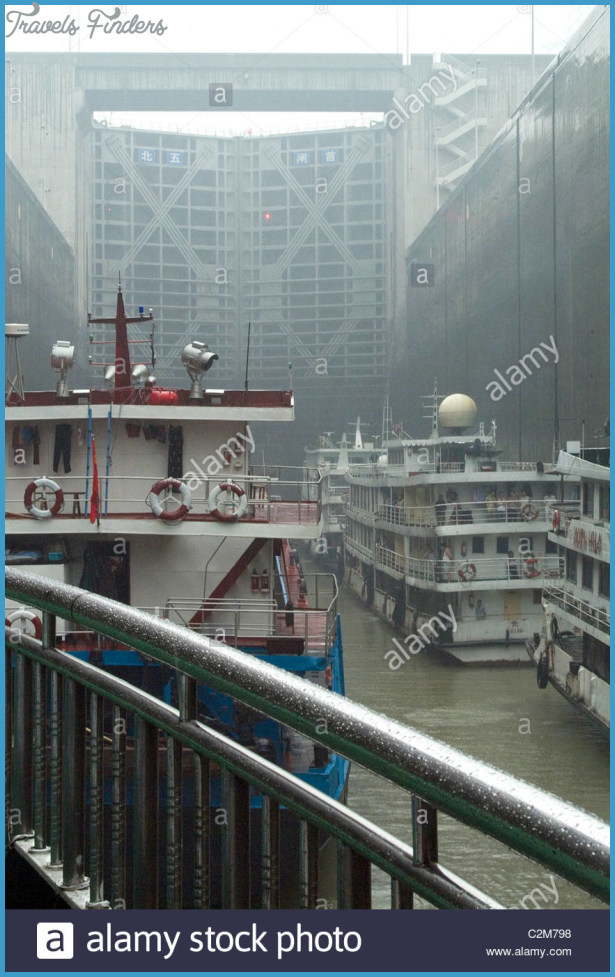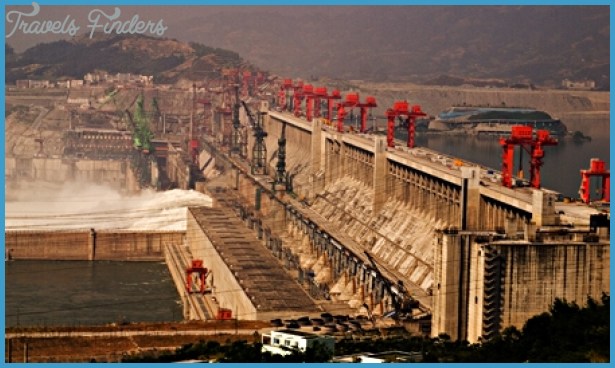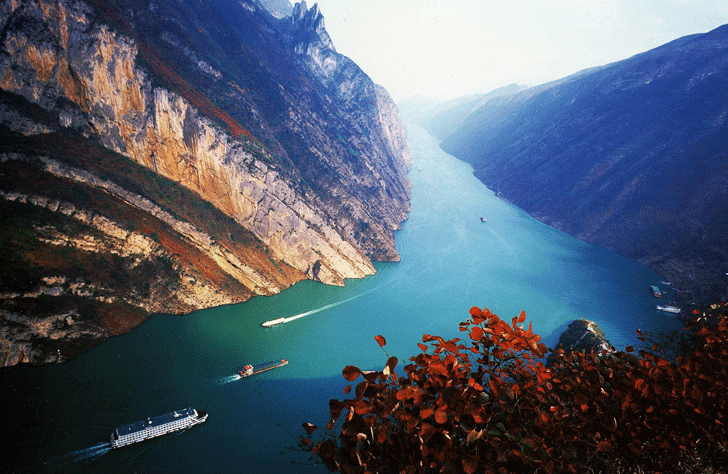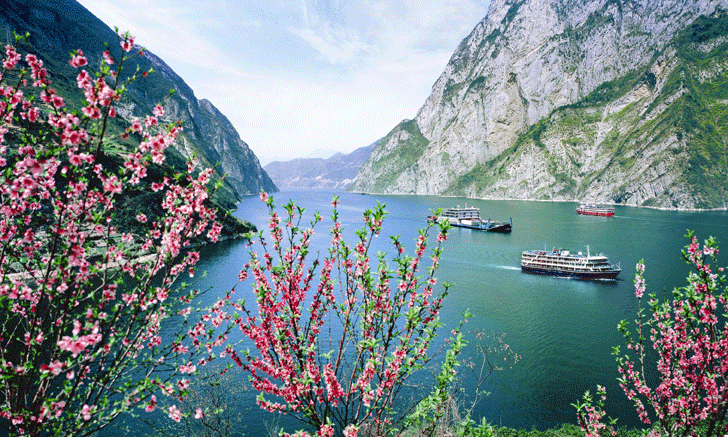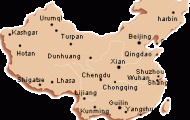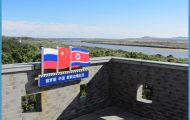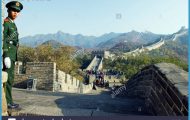The low and high water levels of the Changjiang vary according to the season by as much as 80m/260ft; in its lower reaches this variance can be twice as much as that of the Mississipi.
Regular flooding ofthe river causes much devastation. For example, the flood of 1981 in the province of Sichuan resulted in 920 deaths and 28,000 injuries; 1,500,000 people were rendered homeless.
A major cause of this flooding was the destruction of forests along the upper reaches of the river to provide more land for the growing of cereal crops. Attempts are now being made to solve the problem by means of re-afforestation programmes.
Under construction on the Changjiang near Yichang is the huge and ecologically controversial Sanxia Dam, 2km/1’/4 miles long and almost 200m/650ft high, with the generating capacity of 16 nuclear power stations. As well as supplying electricity the dam will provide water for irrigation and enhance flood protection. To build the dam 1.2 million people had to be resettled. The picturesque Three Gorges, which attract hundreds of thousands of visitors each year, will be filled with water.
Scenically the most beautiful section of the Changjiang is the 200km/ 125 mile stretch between Fengjie, a small town 260km/160 miles east of Chongqing, and Yichang in the province of Hubei. This stretch has been made navigable with the aid of blasting operations to remove shallows and by marking out shipping channels.
Between Zhongxian and Wanxian lies the fortified “treasury” built into the Treasury in rock face and known as the “Pearl ofthe River”. It is 56m/184ft high, making Stone it the highest building of its kind in China. Constructed by Emperor Yon Shi Bao Zhai) gyan c. 1800, it is made up of three parts, the entrance, a twelve-storey edifice and a temple. Inside stand a statue of the Buddha and a stela (upright slab) inscribed with a description of how the temple was built.
Legend has it that at one time rice would fall every day from a small hole in the rock and thus provide food for the monks. It was this “treasure” found in the rock that gave the temple its name. When some monks tried to enlarge the hole the rice stopped flowing. on north bank: Denglong, Shengquan, Zhaoyun, Shennii. Songluan, Jixian, on south bank: Jingtan Qiyun, Feifeng, Shang-sheng, Cuiping, Juhe
From west to east, one behind the other, lie the three famous and picturesque gorges known as Qutang, Wu and Xiling, forming what has been described as “the most entrancing scenery in the world”.
At a number of places the river, a mixture of raging torrents and dangerous shallows, winds its way through the gorges which are lined with rugged cliffs and high mountain peaks. There are many places of interest to tourists.
A sight-seeing tour ofthe Three Gorges and the historical and cultural monuments can be made only by boat. As a rule the excursion will commence in Chongqing and pass through Changzhou, Fuling, Fengdu, Zhongxian and Wanxian to Yichang.
On the opposite bank from the town of Yunyang stands the Temple of Zhang Fei Miao Zhang Fei Miao, dating from the Northern Song period (960-1127). It was erected in memory of General Zhang Fei, who is said to have been murdered here by mutinous army officers in the year 220.
In the Qutang Xia Gorge, where the Changjiang is at its narrowest, the Qutang Xia banks reach a height of between 500 and 700m/1650 and 2300ft and the Gorge mountains as much as 1000 to 1400m/3300 to 4600ft. The narrowest spot, known as the “place ofthe monk with his head hanging down”, is only 100m/110yd wide.
The gorge is4km/2’/2 milesfrom Fennggjie and is about 8km/5 miles long.
At its entrance the ruins ofthe City ofthe White Emperor can be seen on the north bank of the Changjiang. It was given this name in a.d. 25 when -according to legend – Gongsun Shu, the founder of the town, saw a white mist rise up out ofthe Bailon (White Dragon) spring, and thereupon named himself the White Emperor.

